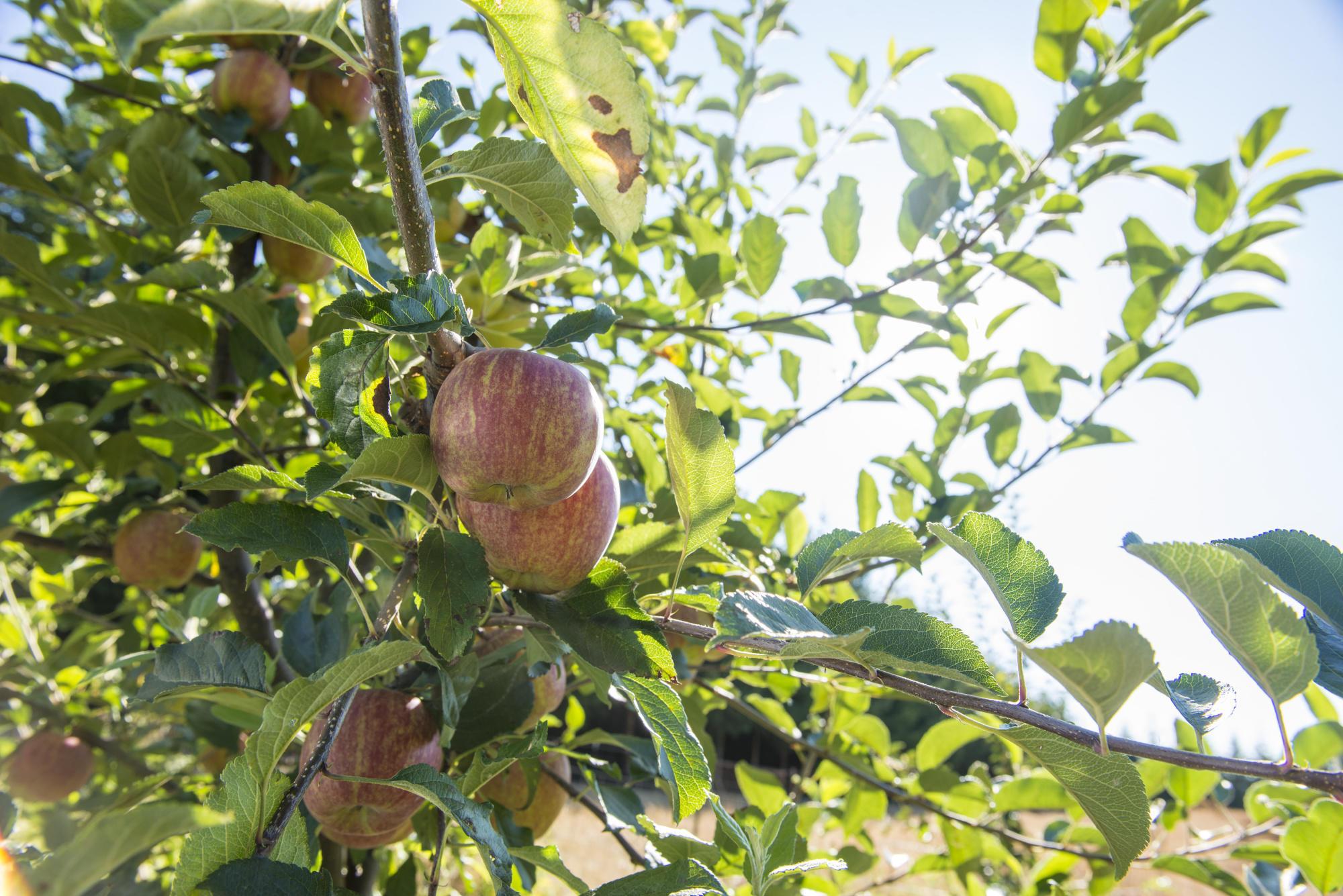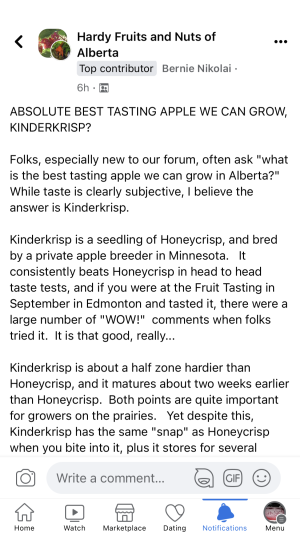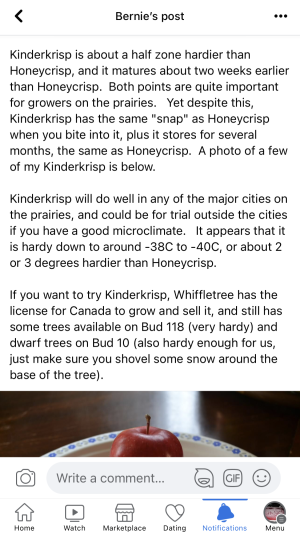Bowsnbucks
5 year old buck +
Goldrush IS susceptible to CAR, but resists the other major apple diseases. For CAR to be spread, it needs an alternate "host plant" - a member of the juniper family to serve as a "host" or "nursery" for spores. Red cedar is actually a juniper - despite the name - so if you have red cedars or junipers around where you have apples planted, CAR is likely to show up.
As an example - I have a Profusion crab apple tree in my yard. It never had CAR on it until neighbors planted a row of junipers along their driveway. The year after they planted their junipers - I had CAR show up on my crab apple tree.
Merle -
Goldrush is a great eater, isn't it??!! Goldrush and Crimson Topaz are my favorite eaters. Crimson Topaz is very similar to Goldrush in taste - sweet, but with a nice tartness to it. Tangy. They're both late apples - but that's OK with me - worth the wait!!
EDIT: Thanks TC for the extra names of bulletproof varieties!! My camp is lucky to have NO junipers or red cedar around us for MILES - so no CAR problems really - at least at camp. Here at my home - I'd have to spray for CAR.
As an example - I have a Profusion crab apple tree in my yard. It never had CAR on it until neighbors planted a row of junipers along their driveway. The year after they planted their junipers - I had CAR show up on my crab apple tree.
Merle -
Goldrush is a great eater, isn't it??!! Goldrush and Crimson Topaz are my favorite eaters. Crimson Topaz is very similar to Goldrush in taste - sweet, but with a nice tartness to it. Tangy. They're both late apples - but that's OK with me - worth the wait!!
EDIT: Thanks TC for the extra names of bulletproof varieties!! My camp is lucky to have NO junipers or red cedar around us for MILES - so no CAR problems really - at least at camp. Here at my home - I'd have to spray for CAR.






